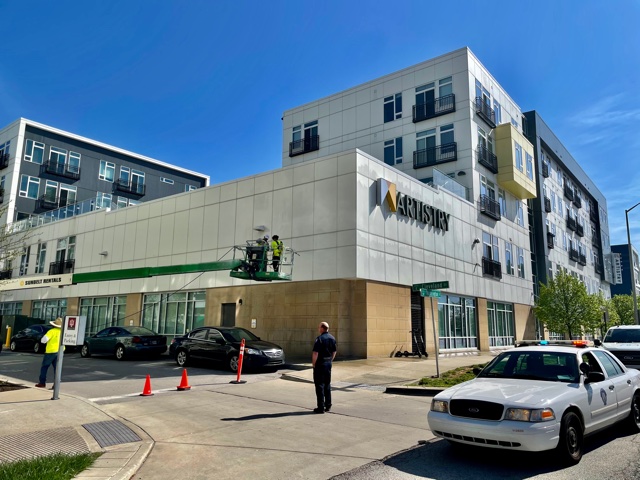If there is ever a time to reflect on what has changed in facility management and what you need to stay ahead, the time is now. Picture two scenes: in one, at a large building on a city street, multiple parcel delivery trucks are tightly stacked in a parking lane outside the building. Each is unloading large rolling carts of corrugated boxes destined for the suites within that building. In the second scene, a woman walks by that stack, removing a key chain from her bag that contains a fob for her apartment, an RFD passcard for her office and a QR code tag for her workout facility – and no keys.
Facilities, and what we demand from them, how we access them and how we use them has changed. Facility management has changed. And you’ve noticed it, whether you are involved in the industry or not, even if you may not be fully aware that you have been witnessing that industry change. Change in the way we live is baked into change in facilities management.
Quickly picture one more scene, one in which you might find yourself right now – professional life as a work-from-home/hybrid employee. All these illustrations touch on our global, interconnected, and on-demand economy, and the interweaving aspects of safety/security/access/technology in our lives at work and home. These features of modern life have become integrated into the job concerns of a facilities management professional. And it’s just the tip of the iceberg and only a hint at what you will need to stay ahead. The traditional role has greatly evolved for a number of reasons and a look at that evolution can reveal what’s needed.
The Traditional Role of Facility Management
Facility management in America existed for decades in the realm of unskilled or semi-skilled labor. A manager might have participated in an apprentice-style relationship through appointment to a grounds or maintenance crew position. The focus was on-demand maintenance and preventative maintenance of a facility in the interest of basic safety, occupant retention and maintenance of cash flow for the operating management company. The role was very hands-on and experience driven.
The position of Facility Manager existed since the 70s but, until recently was not a position recognized by important occupational clearinghouses such as the Bureau of Labor. Thus, the occupation was grafted onto other educational programs, but was not necessarily recognized with its own degree or certificate programs as it is today. With the increasing complexity and recognized importance of the position, things have changed. Each facility is different, but some commonalities exist in how the evolution of the business climate and position has impacted their management today.
The Next Wave of Facilities Manager
It may be an apt description of Facility Management as a ‘generalist’ position. That description might gloss over the importance and skill required of the position. As illustrated in our introduction, vast changes like the explosion in hybrid work and work-from-home arrangements require facilities managers at office and residential locations to be extremely creative and adaptable as leaders. Facility managers are crucial to the sustainability of the facilities they are shepherding through these disruptions.
Where do some of the big challenges for a facility manager come from today?
- Safety and security – liability, homeland security and other concerns factor into heightened demand for safety and security within the buildings where people work and live.
- Safety and security – liability, homeland security and other concerns factor into heightened demand for safety and security within the buildings where people work and live.
- Health – Since the COVID-19 pandemic, it’s more crucial than ever to provide a healthy environment. COVID-19-era cleanliness and sanitization standards will likely endure. Keeping a fresh coat of paint on everything will make facilities look and feel clean.
- Technology – Internet-enabled systems, video and other technology is now expected and integrated into modern facilities.
- Cybersecurity – almost any facility is a data “warehouse” or passthrough site. Protecting systems and data may fall, in part, under the purview of a facilities manager.
- Distributed work – rebalancing office and/or home space to accommodate the current and future professional class that blurs the distinction between the two.
- General management – mobility of people and companies requires greater attention to the business side, including leasing, contracts and general upkeep, of facilities management.
You can see there is a call for new solutions, whether that’s automation, situational outsourcing, employee recruiting and training, or the updating of facilities to adapt to today’s environment. There are a lot of factors folded into what has changed in facility management and what you need to know to stay ahead. A facility manager needs a finger on the pulse and the ability to connect a wide range of initiatives to larger business goals to make it all work.





